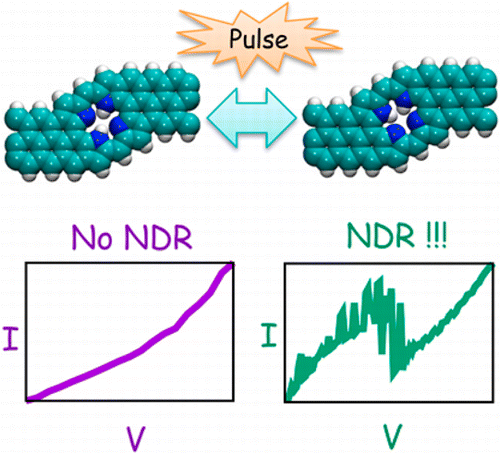Charge transport signatures of a carbon-based molecular switch consisting of different tautomers of metal-free porphyrin embedded between graphene nanoribbons is studied by combining electronic structure and nonequilibrium transport. Different low-energy and low-bias features are revealed, including negative differential resistance (NDR) and antiresonances, both mediated by subtle quantum interference effects. Moreover, the molecular junctions can display moderate rectifying or nonlinear behavior depending on the position of the hydrogen atoms within the porphyrin core. We rationalize the mechanism leading to NDR and antiresonances by providing a detailed analysis of transmission pathways and frontier molecular orbital distribution.

Charge transport signatures of a carbon-based molecular switch consisting of different tautomers of metal-free porphyrin embedded between graphene nanoribbons is studied by combining electronic structure and nonequilibrium transport. Different low-energy and low-bias features are revealed, including negative differential resistance (NDR) and antiresonances, both mediated by subtle quantum interference effects. Moreover, the molecular junctions can display moderate rectifying or nonlinear behavior depending on the position of the hydrogen atoms within the porphyrin core. We rationalize the mechanism leading to NDR and antiresonances by providing a detailed analysis of transmission pathways and frontier molecular orbital distribution.
